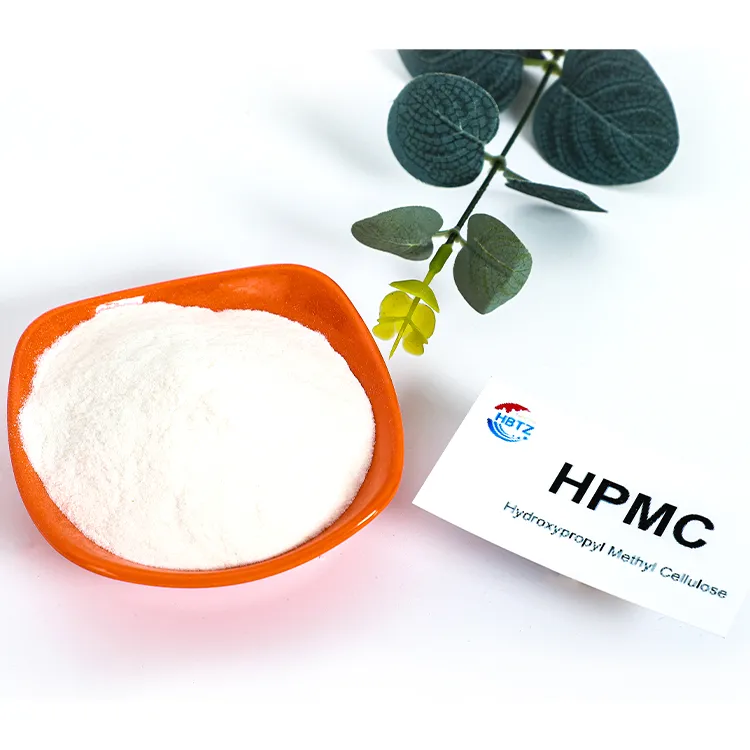
HPMC Thickener - Hebei Tangzhi Technology Co., Ltd.|High Viscosity Control&Thermal Stability
Hydroxypropyl methylcellulose (HPMC) is a versatile multifunctional thickener and stabilizer that plays a critical role in modern industrial and consumer applications. With its unique chemical structure and properties, HPMC has become an essential component in fields such as construction, medicine, food, and daily chemicals. This article explores the core features, advantages, technical specifications, and application scenarios of HPMC, while also highlighting the expertise of Hebei Tangzhi Technology Co., Ltd., a leading HPMC supplier in China.

Understanding Hydroxypropyl Methyl Cellulose (HPMC)
HPMC is a cellulose ether derived from natural cellulose through chemical modification. Its chemical structure combines hydroxypropyl and methyl groups, enhancing its solubility, film-forming ability, and stability. The CAS number 9004-65-3 identifies HPMC as a widely recognized compound in industrial applications. As a high-performance thickener, HPMC is valued for its ability to improve the rheological properties of formulations, ensuring consistency and durability.
According to the National Institute of Standards and Technology (NIST) Chemistry WebBook, HPMC exhibits excellent water retention and adhesion properties, making it suitable for diverse environments. These characteristics align with its use in construction materials, pharmaceuticals, and food products.
Key Features of HPMC
- High Viscosity Control: HPMC allows precise adjustment of viscosity, ensuring optimal flow and stability in formulations.
- Thermal Stability: It maintains its structural integrity under varying temperature conditions, making it ideal for both hot and cold applications.
- Biocompatibility: HPMC is non-toxic and compatible with biological systems, supporting its use in medical and food-grade applications.
- Environmental Friendliness: Derived from renewable resources, HPMC contributes to sustainable manufacturing processes.
Advantages of HPMC in Industrial Applications
The versatility of HPMC stems from its ability to enhance product performance across multiple industries. Here are some of its key advantages:
1. Construction Industry
In construction, HPMC is used as a stabilizer in cementitious and gypsum-based products. It improves workability, reduces water loss, and enhances adhesion. For example, in tile adhesives and plaster formulations, HPMC ensures even distribution and long-term durability. According to the NIST Standard Reference Materials, HPMC’s water retention properties are critical for maintaining the integrity of mortar and grout systems.
2. Pharmaceutical Applications
HPMC is a key excipient in drug delivery systems. It acts as a binder, disintegrant, and coating agent in tablets and capsules. Its ability to control the release rate of active ingredients makes it a preferred choice in controlled-release formulations. The NIST Pharmaceutical Research Program highlights HPMC’s role in ensuring the consistency and efficacy of pharmaceutical products.
3. Food and Beverage Sector
In the food industry, HPMC functions as a thickener, emulsifier, and stabilizer. It is used in products such as dairy alternatives, baked goods, and sauces to improve texture and shelf life. Its non-GMO and allergen-free properties align with modern consumer demands for clean-label ingredients.
4. Daily Chemicals
HPMC is widely used in personal care and household products. It enhances the foaming properties of shampoos and detergents while improving the film-forming ability of lotions and creams. Its biodegradability also supports eco-friendly product development.

Technical Specifications of HPMC
| Parameter | Specification |
|---|---|
| Viscosity (2% solution, 20°C) | 100-2000 mPa·s |
| pH Range | 6.0-8.0 |
| Moisture Content | ≤5.0% |
| Particle Size | 80-100 mesh |
| Storage Stability | 12 months in sealed container111s |
Why Choose Hebei Tangzhi Technology Co., Ltd.?
As a China HPMC factory and HPMC supplier, Hebei Tangzhi Technology Co., Ltd. has established itself as a trusted provider of high-quality HPMC products. With over a decade of experience, the company specializes in manufacturing HPMC for sale to global markets. Their commitment to innovation, quality control, and customer satisfaction ensures that their products meet international standards.
The company’s production facilities are equipped with advanced technology to maintain consistent product quality. They adhere to ISO 9001 and GMP certifications, ensuring that their HPMC meets the rigorous requirements of industries such as pharmaceuticals, construction, and food processing. For more information about their HPMC buy options, visit their product page.
Application Scenarios and Case Studies
HPMC’s adaptability is evident in its widespread use across various sectors. Here are some real-world examples:
1. Construction: Tile Adhesive Formulation
HPMC is a critical component in tile adhesives, where it enhances bond strength and workability. A case study by the NIST Standard Reference Materials demonstrated that HPMC-based adhesives reduced slippage by 30% compared to traditional formulations.
2. Pharmaceuticals: Controlled-Release Tablets
HPMC is used in controlled-release tablets to regulate the release of active ingredients. Research published in the NIST Journal of Research highlighted HPMC’s ability to maintain consistent drug release over 12 hours, improving patient compliance.
3. Food Industry: Plant-Based Dairy Alternatives
HPMC is employed in plant-based milk and yogurt to mimic the texture of dairy products. A study by the NIST Food Research Division found that HPMC improved the stability of plant-based emulsions by 25%, extending shelf life and enhancing consumer appeal.
Conclusion
Hydroxypropyl methylcellulose (HPMC) is a multifunctional compound that continues to drive innovation across industries. Its high-performance characteristics, versatile applications, and eco-friendly profile make it an indispensable material in modern manufacturing. As a leading HPMC supplier, Hebei Tangzhi Technology Co., Ltd. remains dedicated to delivering high-quality HPMC products that meet the evolving needs of global markets.
For more details about their HPMC for sale, visit the official product page or contact their team for customized solutions.
References
-
Reliable Powdered Cellulose Supplier: Quality, Sustainability & InnovationNewsNov.24,2025
-
Find Trusted Microfibrillated Cellulose Suppliers for Sustainable Industrial SolutionsNewsNov.24,2025
-
Leading Methocel Suppliers: Quality, Innovation & Sustainability in Methylcellulose SupplyNewsNov.23,2025
-
Reliable Hydroxyethylcellulose Suppliers for Industry & Sustainability | Tangzhi HPMCNewsNov.23,2025
-
Top Ethyl Cellulose Supplier – Quality, Sustainability, and Industrial SupportNewsNov.23,2025
-
Trusted CMC Powder Suppliers for Food, Pharma & Industrial Use | Tangzhi HPMCNewsNov.22,2025





















